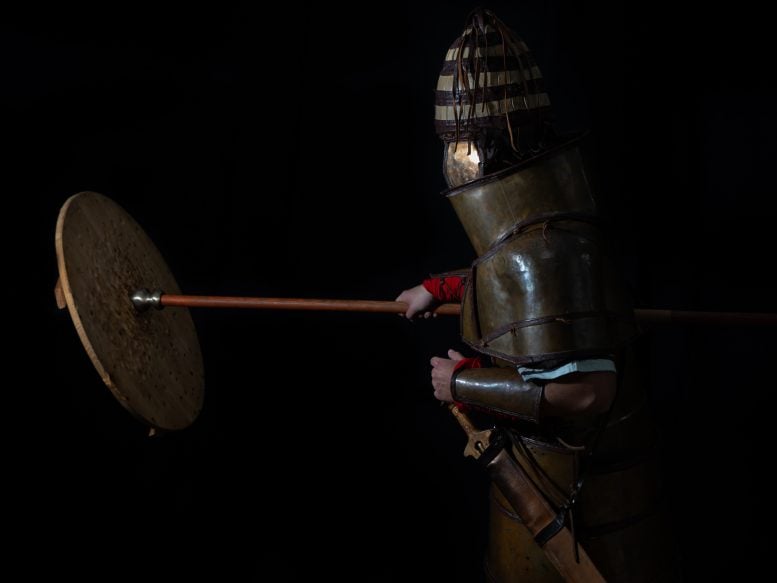
New research reveals that a 3500-year-old Mycenaean armor, previously thought to be ceremonial, was actually effective in battle, as demonstrated through an extensive combat simulation involving modern-day soldiers. This finding underscores the Mycenaeans’ advanced military technology during the Late Bronze Age. Credit: Andreas Flouris and Marija Marković
A new study confirmed that a 3500-year-old Mycenaean suit of armor was combat-ready, as evidenced by tests with Greek Marines enduring a rigorous combat simulation, highlighting its significant role in Mycenaean military prowess.
A study recently published in the open-access journal PLOS ONE reveals that a famous Mycenaean suit of armor was designed for extended combat, not just for ceremonial purposes. The research, conducted by Andreas Flouris and colleagues at the University of Thessaly in Greece, supports its use in active warfare.
One of the oldest known suits of European armor is a 3500-year-old suit found near the village of Dendra, a few kilometers away from ancient Mycenae. Since its discovery in 1960, it has been unclear if this was a ceremonial suit or if it was suitable for battle. This question has important implications for understanding warfare in Late Bronze Age Europe, but no historical accounts describe the use of this style of armor. In this study, researchers combine historical and experimental evidence to investigate the combat suitability of the Dendra armor.
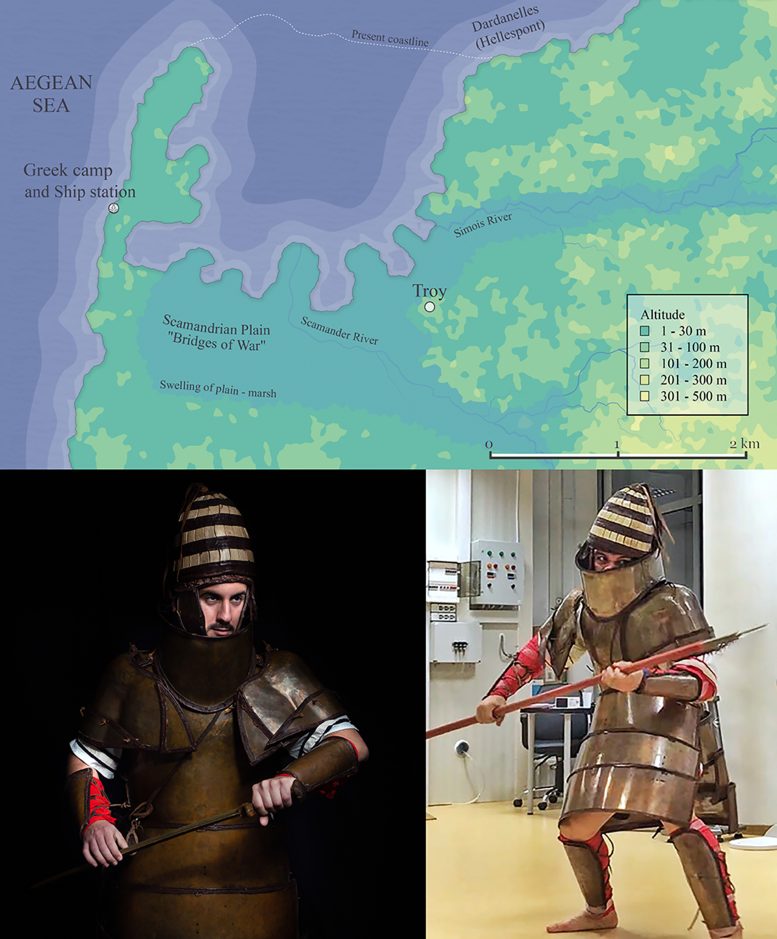
Top: Geomorphology of the area surrounding Troy in the later phases of the Late Bronze Age (labels indicate the locations of the two army encampments and the geographic features of the area). The map was created using Azgaar’s Fantasy Map Generator, a free web application, under a CC BY license, with permission from Max Haniyeu, original copyright 2017–2021. Bottom: Volunteer marine soldiers in simulated combat wearing the Dendra armour replica during the empirical study (right) and an artistic photo shoot (left). Photo credit: Andreas Flouris and Marija Marković. Credit: Flouris et al., 2024, PLOS ONE, CC-BY 4.0
The authors recruited thirteen volunteers from the Marines of the Hellenic Armed Forces, equipped them with replicas of the Dendra armor and Bronze Age weapons, and ran them through an eleven-hour simulated Bronze Age combat protocol. This combat simulation was developed based on historical accounts from Homer’s Iliad along with additional physiological and environmental evidence to create an approximation of the typical diet, activities, and maneuvers of the Mycenaean military. The experiment found that the replicated Dendra armor did not limit a warrior’s fighting ability or cause severe strain on the wearer.
These results suggest that the Dendra armor was battle-worthy, implying that the Mycenaean’s powerful impact in Mediterranean history was due partly to their armor technology. To supplement these results, the authors developed a freely available software that enables the simulation of combat conditions to test the hypothetical efficacy of the armor in more varied scenarios. Further research into Mycenaean combat technology will continue to illuminate details on the Late Bronze Age and the transition into the Iron Age.
Reference: “Analysis of Greek prehistoric combat in full body armour based on physiological principles: A series of studies using thematic analysis, human experiments, and numerical simulations” by Andreas D. Flouris, Stavros B. Petmezas, Panagiotis I. Asimoglou, João P. Vale, Tiago S. Mayor, Giannis Giakas, Athanasios Z. Jamurtas, Yiannis Koutedakis, Ken Wardle and Diana Wardle, 22 May 2024, PLOS ONE.
DOI: 10.1371/journal.pone.0301494



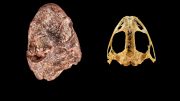



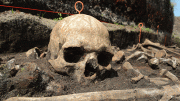
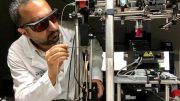
I’d like to have a conversation with the medically- and legally-qualified managers who work at a senior level at the NHS and this hospital, please: I graduated from Gonville and Caius Cambridge in 1986. Thank you.